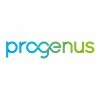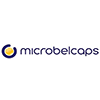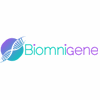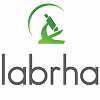INVITRO-CONNECT GMBH
Schweiz
Dienstleister
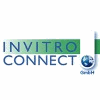
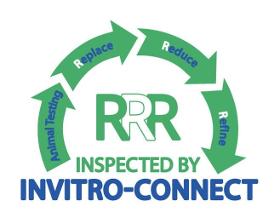
INVITRO-CONNECT GMBH
Schweiz
INVITRO-CONNECT GmbH offers various test strategies without animal testing for examining Eye Irritation / Eye damage hazard assessment. From standard regulatory hazard assessments to providing information on the degree of ocular irritation, to discriminating among extremely mild eye area products, INVITRO-CONNECT’ Study Monitors take the time to understand your specific goals and apply the most relevant, cost-effective strategies to achieve them. Tests for Eye Irritation / Eye damage hazard assessment in vitro: HET-CAM Assay BCOP: OECD 437 Isolated Chicken Eye Test: OECD 438 STE / Short Time Exposure (STE, OECD 491): Ocular Irritection EpiOcular & SkinEthic HCE Reconstructed human Cornea-like Epithelium (RhCE): OECD 492 For more information please contact INVITRO-CONNECT GmbH for assistance in developing specialized protocols for your test materials. INVITRO-CONNECT GmbH: Fast Project Execution: personal - competent - reliable --> contact@invitro-connect.com
Angebot anfordern
INVITRO-CONNECT GMBH
Schweiz
Testing against enveloped viruses as a replacement for the currently unavailable commercial test strategy against 2019-nCov / SARS-CoV-2 Since the new SARS-CoV-2 virus is one of the enveloped viruses, INVITRO-CONNECT GmbH offers testing of various surfaces and disinfectants against the Vaccinia Ankara Virus (MVA) as a reference virus for enveloped viruses, as well as against the bovine coronavirus , which, like SARS-CoV-2, belongs to the genus Betacoronavirus. In addition to standard tests for surfaces in accordance with ISO 21702 (smooth surfaces) and ISO 18184 (rough surfaces) as well as suspension tests for the disinfectant area (EN ISO 14476/16777), other tests are also offered on request (see below). Named tests are currently the state-of-the-art test methods for testing against 2019-nCov / SARS-CoV-2, as there is currently no specific test procedure against the 2019-nCov / SARS-CoV-2 virus itself. For more information --> contact@invitro-connect.com
Angebot anfordern
INVITRO-CONNECT GMBH
Schweiz
Microbiological examinations / Microbiological tests against viruses, bacteriophages, bacteria, yeast, molds, mycobacteria and bacterial spores for disinfectants, medical devices, pharmaceutical products and cosmetics Our team of experts supports manufacturers of biocidal and medical products as well as cosmetics and pharmaceuticals scientifically in the context of approval projects. For example, we create safety assessments for cosmetics and biocompatibility assessments for medical devices. Here we focus in particular on infection prevention and wound treatment products. For more information please contact INVITRO-CONNECT GmbH for assistance in developing specialized protocols for your test materials. INVITRO-CONNECT GmbH: Fast Project Execution: personal - competent - reliable --> contact@invitro-connect.com
Angebot anfordern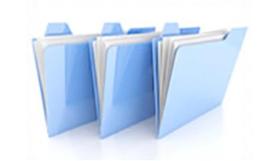
INVITRO-CONNECT GMBH
Schweiz
Material Safety Data Sheet - Hazardous Substances Advice and Hazardous Substance Management Overview of our services: - Check of conformity and plausibility as well as updating of existing Material Safety Data Sheets - Preparing of extended Material Safety Data Sheets - Classification and labelling of substances according to the current GHS regulation (CLP regulation) Depend on requirements INVITRO-CONNECT GmbH checks whether your existing safety data sheets are still compliant and plausible to follow latest REACH guidelines and if necessary, updates them for you. Furthermore, based on our know-how we provide extended material safety data sheet, following the REACH Directive as well as the latest European GHS regulation for classification and labelling of substances. INVITRO-CONNECT GmbH - Fast Project Execution: personal - competent - reliable --> contact@invitro-connect.com Best regards Pascal Piller and Dr. Ute Hassmann and the whole team of INVITRO-CONNECT GmbH
Angebot anfordern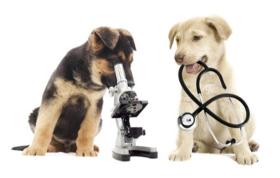
INVITRO-CONNECT GMBH
Schweiz
- in vitro gene mutation study in bacteria: Ames Test OECD 471 - in vitro gene mutation study in mammalian cells: Mouse Lymphoma Assay (MLTK Assay) OECD 490 - in vitro gene mutation study in mammalian cells: HPRT test / OECD 476 - Micronucleus Assay in vitro (Human Lymphocytes or V79 cells) / OECD 487 - Chromosomal aberration Assay in vitro (Human Lymphocytes or V79 cells) / OECD 473 - Hen’s Egg Test – Induction of Micronuclei (HET-MN) - COMET Assay in different cell types - Cell Transformation Assay in Bhas Cells / OECD 231 (draft) - Mammalian Erythrocyte Micronucleus Test / OECD 474 / ISO 10993-3 - Combined Mammalian Erythrocyte Micronucleus Test with concurrent Alkaline Comet Assay in vivo OECD 474 & 489 - In vivo Mammalian Alkaline Comet Assay / OECD 489 - Unscheduled DNA synthesis (UDS) Test with Mammalian Liver Cells in vivo / OECD 486 - Mammalian Spermatogonial Chromosomal Aberration test / OECD 483 - Mammalian Bone Marrow Chromosomal Aberration test / OECD 475
Angebot anfordern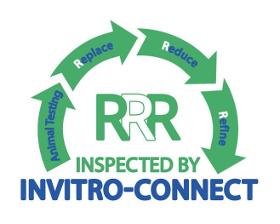
INVITRO-CONNECT GMBH
Schweiz
INVITRO-CONNECT GmbH offers various test strategies without animal testing for examining Eye Irritation / Eye damage hazard assessment. From standard regulatory hazard assessments to providing information on the degree of ocular irritation, to discriminating among extremely mild eye area products, INVITRO-CONNECT’ Study Monitors take the time to understand your specific goals and apply the most relevant, cost-effective strategies to achieve them. Tests for Eye Irritation / Eye damage hazard assessment in vitro: HET-CAM Assay BCOP: OECD 437 Isolated Chicken Eye Test: OECD 438 STE / Short Time Exposure (STE, OECD 491): Ocular Irritection EpiOcular & SkinEthic HCE Reconstructed human Cornea-like Epithelium (RhCE): OECD 492 For more information please contact INVITRO-CONNECT GmbH for assistance in developing specialized protocols for your test materials. INVITRO-CONNECT GmbH: Fast Project Execution: personal - competent - reliable --> contact@invitro-connect.com
Angebot anfordern
INVITRO-CONNECT GMBH
Schweiz
INVITRO-CONNECT GmbH offers various test strategies without animal testing for examining skin Corrosion: - OECD 435 - Skin Corrosion : "In Vitro Membrane Barrier Test Method for Skin Corrosion" (Corrositex): The Corrositex® assay is a standardized and quantitative in vitro test developed as a replacement for the dermal corrosivity rabbit test. The Corrositex® assay is presently the only in vitro assay approved by the U.S. Department of Transportation for testing potential corrosive materials and assigning packing group categories. For more information please contact INVITRO-CONNECT GmbH for assistance in developing specialized protocols for your test materials. INVITRO-CONNECT GmbH: Fast Project Execution: personal - competent - reliable --> contact@invitro-connect.com More than 80 test laboratories - Product safety - Regulatory service - In vitro tests - All OECD tests for pharmaceuticals, chemicals, medical devices and cosmetics - Study monitoring, MSDS etc.
Angebot anfordern
INVITRO-CONNECT GMBH
Schweiz
Determination of skin sensitization potential is a critical endpoint in the safety assessment of raw materials, chemicals, mixtures and formulations. Although the Guinea Pig Maximization Test (GPMT) and Local Lymph node assay (LLNA) have historically been used to address this adverse effect, in vitro assays have been developed and validated in order to replace these resource-intensive animal tests. INVITRO-CONNECT GmbH offers various test strategies without animal testing for examining skin sensitization: - Direct Peptide Reactivity Activation Assay (DPRA, OECD 442C) - ARE-Nrf2 Luciferase Keratinocyte Activation Test Method (OECD 442D) -Human Cell Line Activation Test (h-CLAT, OECD 442E) -Kinetic Direct Peptide Reactivity Assay (kDPRA) -Myeloid U937 Skin Sensitization Test (MUSST / U-SENS) -and more Fast Project Execution: personal - competent - reliable --> contact@invitro-connect. - More than 80 Test Laboratories - Product Safety - Regulatory Service -
Angebot anfordern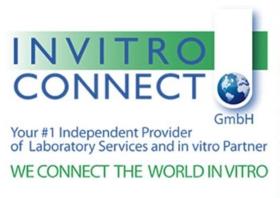
INVITRO-CONNECT GMBH
Schweiz
- OECD 431 - Human Skin Corrosion: "In Vitro OECD 431: Reconstructed Human Epidermis Test Method, in vitro Test - Skin Corrosion in the regulatory hazard classification and labeling context is defined as the production of irreversible damage to skin, generally evident as necrosis through the epidermis and into the dermis, following a defined chemical exposure. The In Vitro Skin Corrosion Test is an in vitro, non-animal test designed to identify those chemicals and mixtures capable of inducing skin corrosion (UN GHS Category 11), and in some cases to partially subcategorize corrosives into UN GHS Sub-Categories 1A or 1B and 1C (ie., the current test methods do not effectively discriminate between UN GHS Sub-Categories 1B and 1C). For more information please contact INVITRO-CONNECT GmbH for assistance in developing specialized protocols for your test materials. INVITRO-CONNECT GmbH: Fast Project Execution: personal - competent - reliable --> contact@invitro-connect.com
Angebot anfordern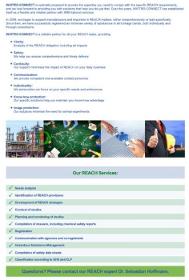
INVITRO-CONNECT GMBH
Schweiz
We offer you the following services: - Regulatory Advice - REACH Registration - Preparation of Registration Dossiers - Read Across - IUCLID - Robust Study Summaries - Chemical Safety Report / CSR - Toxicological Expertise - Optimal Test Strategy Development - REACH Testing: Tests and Studies acc. GLP - REACH Study Monitoring - SVHC Screening - Risk Assessment - REACh Compliance Service / REACh Auditing Service - REACH Material Safety Data Sheets We would also be happy to be your REACH service provider, who reliably looks after your REACH projects, just as we already do for many other satisfied customers. For more information please contact INVITRO-CONNECT GmbH. Fast Project Execution: personal - competent - reliable --> contact@invitro-connect.com REACH Service - All REACH laboratory tests - Phys-Chem / Tox / in vitro tests / Genotox / Ecotox, etc. - More than 80 test laboratories - Study monitoring, Regulatory Service, IUCLID 6, CSR etc.
Angebot anforderneuropages empfiehlt Ihnen ebenfalls
Eine Auswahl an Firmen mit ähnlicher Aktivität:
Eine Auswahl an Produkten, die Sie interessieren könnten
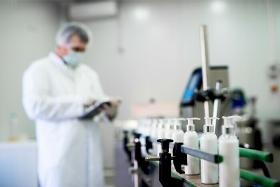
LOUISE PLEGÉ COSMETICS
Österreich
Auf Wunsch bieten wir Ihnen gerne Hilfestellung bei rechtlichen Fragen an oder stellen Kontakt zu Laboren bzw. Sachverständigen her, mit denen wir zusammenarbeiten. Auf Wunsch bieten wir Ihnen gerne Hilfestellung bei folgenden Punkten an oder stellen Kontakt zu Laboren bzw. Sachverständigen her, mit denen wir zusammenarbeiten: - Erstellung von Sicherheitsbewertungen - Mögliche Auslobungen und Werbeaussagen - Inhaltsstoffangaben nach INCI Vorschriften - Dermatologische Gutachten - Konservierungsmittel-Belastungstests - Export- und Zollbestimmungen
Angebot anfordern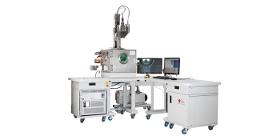
FOCUS GMBH GERÄTE ZUR ELEKTRONENSPEKTROSKOPIE UND OBERFLÄCHENANALYTIK
Deutschland
Anlage zum Schweißen mit dem Laser unter Vakuum für feine und feinste Nähte bei minimalem Energieeintrag in das Werkstück. Optional bieten wir eine bauteilspezifische Prozessentwicklung an. LaVa ist die Abkürzung für Laserschweißen unter Vakuum [LaVa = Laser in Vacuum] und kombiniert die Stärken des Lasers mit einer Vakuumumgebung mit einstellbarem Druck. Ein Betrieb bei reduziertem Druck um 1 mbar verbessert den Tiefschweißeffekt und verdoppelt die Einschweißtiefe gegenüber Atmoshpäre bei gegebener Leistung. Ein weiterer Vorteil ist die signifikante Reduzierung der Spritzer auf nahezu Null. Cu, Ti und viele weitere Materialien können mit LaVa auf einem EB-Leistungsniveau geschweißt werden. Dies gilt auch für magnetische und isolierende Materialien. Auch das Bohren im gepulsten Betrieb profitiert von den genannten Vorteilen. Die LaVa – Anlage ist schlüsselfertig inkl.
Angebot anfordern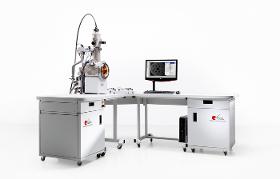
FOCUS GMBH GERÄTE ZUR ELEKTRONENSPEKTROSKOPIE UND OBERFLÄCHENANALYTIK
Deutschland
Anlage zum Schweißen mit dem Mikroelektronenstrahl für feine und feinste Nähte bei minimalem Energieeintrag in das Werkstück. Optional bieten wir eine bauteilspezifische Prozessentwicklung an. FOCUS Mikroelektronenstrahlschweißgeräte (MEBW-60) sind ausgelegt für höchste Präzision beim Fügen und für Oberflächenmodifikationen bis in den μm-Bereich - ein ideales Werkzeug für die Sensortechnologie, die Luft- und Raumfahrtindustrie und das Mikrobohren. Die MEBW-60 Maschinen haben eine Leistung von bis zu 2 Kilowatt (60 kV) und einen Strahlfokus von kleiner 50 Mikrometern. Die Strahlnavigation wird mit einem 25 μm Rasterelektronenmikroskopie-Modus realisiert. Der Strahlstrom kann in Schritten von 15 μA gesteuert werden, um eine ultimative Leistungsregelung für anspruchsvolle Verbindungsprozesse zu gewährleisten.
Angebot anfordern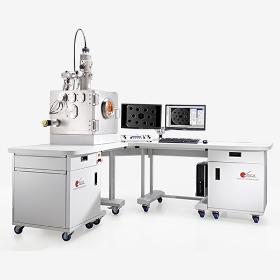
FOCUS GMBH GERÄTE ZUR ELEKTRONENSPEKTROSKOPIE UND OBERFLÄCHENANALYTIK
Deutschland
Anlage zum Schweißen mit dem Mikroelektronenstrahl für feine und feinste Nähte bei minimalem Energieeintrag in das Werkstück. Optional bieten wir eine bauteilspezifische Prozessentwicklung an. FOCUS Mikroelektronenstrahlschweißgeräte (MEBW-60) sind ausgelegt für höchste Präzision beim Fügen und für Oberflächenmodifikationen bis in den μm-Bereich - ein ideales Werkzeug für die Sensortechnologie, die Luft- und Raumfahrtindustrie und das Mikrobohren. Die MEBW-60 Maschinen haben eine Leistung von bis zu 2 Kilowatt (60 kV) und einen Strahlfokus von kleiner 50 Mikrometern. Die Strahlnavigation wird mit einem 25 μm Rasterelektronenmikroskopie-Modus realisiert. Der Strahlstrom kann in Schritten von 15 μA gesteuert werden, um eine ultimative Leistungsregelung für anspruchsvolle Verbindungsprozesse zu gewährleisten.
Angebot anfordernMehrere Angebote erhalten
Mit nur einer Anfrage erhalten Sie mehrere Angebote von geprüften Anbietern
- Nur relevante Anbieter
- Datenschutzkonform
- 100% kostenlos
